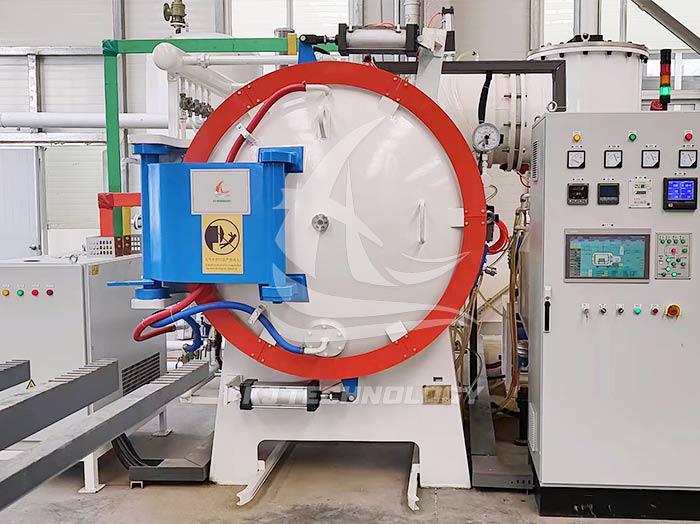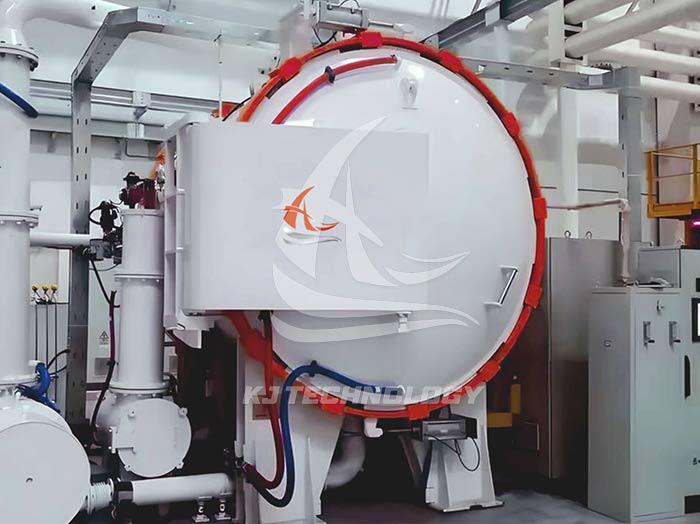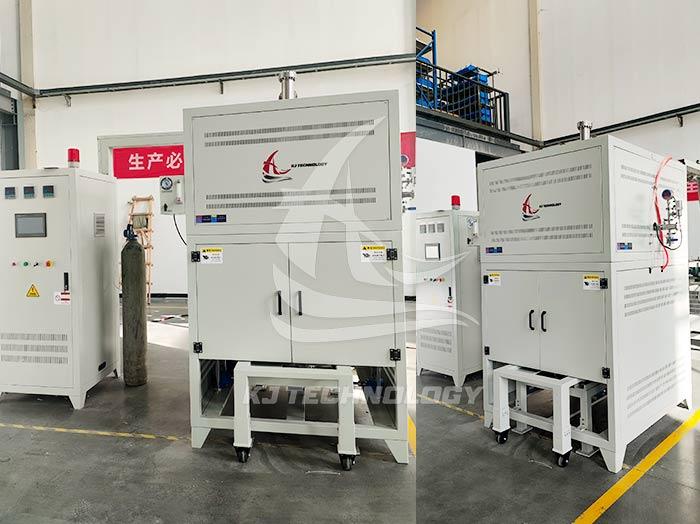What materials can be brazed in a vacuum aluminum brazing furnace?
 06-12-2025 Author: KJ technology
06-12-2025 Author: KJ technology
The vacuum aluminum brazing furnace, with its unique vacuum environment and precise temperature control, can brazing various metals and alloy materials. The following introduces common material categories, typical application scenarios, and advantages of material brazing:
1. Common Types of Brazable Materials
Aluminum alloy: pure aluminum, 1-series (1050, 1060, etc.), 3-series (3003, 3004, etc.), 5-series (5052, 5083, etc.), 6-series (6061, 6063, etc.) automotive radiators, air conditioning condensers, heat exchangers, electronic radiators, aerospace structural components
Copper and copper alloys: purple copper, brass, bronze, white copper, power electronic equipment, refrigeration equipment, heat exchangers, conductive components
Stainless steel: Austenitic stainless steel such as 304, 316, 321, ferritic stainless steel such as 430, medical equipment, food processing equipment, chemical equipment, aerospace components
Titanium and titanium alloys: pure titanium, TC4 (Ti-6Al-4V), TC11, aerospace, medical equipment, marine engineering, chemical equipment, etc
Nickel and nickel alloys: pure nickel, Inconel 600, Inconel 625, Monel 400, etc., aerospace, nuclear energy equipment, chemical equipment, high-temperature components
Heterogeneous metal combinations: complex structural components such as aluminum copper, aluminum stainless steel, aluminum titanium, copper stainless steel, multi material systems, electronic packaging, thermal management components, etc
2. Advantages of material brazing
Aluminum alloy brazing
Advantages: Avoiding the formation of oxide film and ensuring the wetting properties of solder; High weld strength and good air tightness; Suitable for complex structures such as tube fin heat exchangers, multi-layer corrugated plates, etc.
Applications: automotive air conditioning condenser, refrigerator evaporator, aerospace heat exchanger.
Copper and copper alloy brazing
Advantages: The brazed joint has good conductivity and high thermal conductivity; Suitable for high-precision electronic components and refrigeration equipment.
Applications: power electronic radiators, air conditioning pipelines, heat exchangers.
Stainless steel brazing
Advantages: The weld seam has strong corrosion resistance and is suitable for fields with high hygiene requirements such as food and medical care; Avoid surface contamination in a vacuum environment.
Applications: Medical devices, food processing equipment, chemical containers.
Titanium and titanium alloy brazing
Advantages: High weld strength, high temperature resistance, and corrosion resistance; Suitable for aerospace and marine engineering.
Application: Aircraft engine components, offshore platform structural components.
Nickel and nickel alloy brazing
Advantages: Weld seams have stable performance in high temperature and corrosive environments; Suitable for nuclear and chemical equipment.
Application: Nuclear reactor components, chemical reactors.
Dissimilar metal brazing
Advantages: Achieving complementary advantages of different materials, such as aluminum copper combination that combines lightweight and high conductivity; Suitable for complex system integration.
Applications: Electronic packaging (aluminum substrates and copper leads), thermal management components (aluminum heat sinks and copper tubes).
3. Key points for selecting brazing materials
Solder matching
Select appropriate brazing materials based on the base material, such as Al Si brazing materials commonly used for aluminum brazing and Ag Cu brazing materials commonly used for copper brazing.
The wettability and metallurgical compatibility between the brazing material and the two base materials need to be considered in the brazing of dissimilar metals.
Surface Treatment
Remove oil stains and oxide films from the surface of the base material, and improve the wettability of the brazing material.
Aluminum materials often require chemical nickel or copper plating to improve brazing performance.
process parameters
Set brazing temperature, holding time, and vacuum degree based on material characteristics.
For example, the brazing temperature for aluminum alloy is usually 595-615 ℃, while the brazing temperature for stainless steel can reach 1050-1150 ℃.
4. Typical application cases
auto radiator
Material: Aluminum alloy (3003/4004 composite foil)
Solder: Al Si based solder
Advantages: High weld strength, good air tightness, and a 15% increase in heat dissipation efficiency.
Aerospace heat exchanger
Materials: Titanium alloy (TC4) and stainless steel (304)
Solder: Ag Cu Ti active solder
Advantages: Achieving heterogeneous metal connections to meet high temperature and high pressure working environments.
Electronic Packaging
Material: Aluminum substrate and copper leads
Solder: Sn Ag Cu lead-free solder
Advantages: Good conductivity of welds and a 20% increase in thermal fatigue life.
Medical equipment
Material: Stainless steel (316L)
Solder: Au Ni solder
Advantages: The weld seam has strong corrosion resistance and meets the requirements of biocompatibility.








